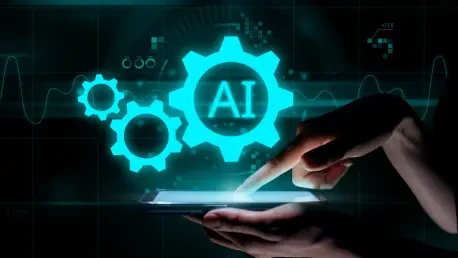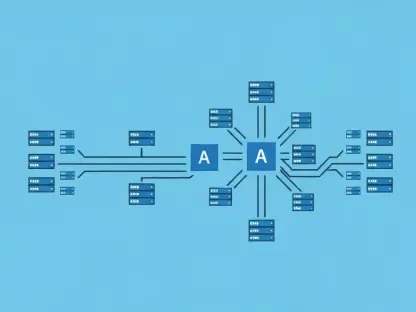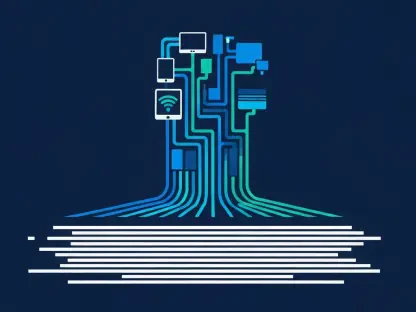In the rapidly evolving landscape of business and technology, the integration of Artificial Intelligence (AI) into Agile practices is reshaping how teams work, communicate, and innovate. Not just another tool, AI emerges as a “cybernetic teammate,” forging pathways to enhanced performance and team satisfaction. AI’s role in Agile methodologies stands as a transformative force, not an intrusive counterpart. This article explores the poignant role AI can play in Agile ceremonies, documentation, interaction, dispute resolution, and meeting management, underpinned by substantial empirical evidence and practical applications.
1. Improving Agile Ceremonies
One of the most tangible ways AI can augment Agile processes is by enhancing key ceremonies, such as Sprint Planning and Retrospectives. AI’s capacity to analyze data and generate insights can significantly improve the efficiency and effectiveness of these events.
Sprint Planning
During Sprint Planning, AI can generate draft acceptance criteria for intricate user stories, streamlining the initial stages of planning. This feature reduces the cognitive load on the team, allowing them to focus on more strategic considerations. AI can also pinpoint possible dependencies or hazards in the planned work, which helps in risk management. Identifying these potential issues early can save valuable time and resources down the line. Additionally, AI can propose task breakdowns for large initiatives, facilitating better planning and execution.
The empirical evidence from studies like Harvard Business School’s research on Procter & Gamble showcases that AI-assisted teams can achieve balanced solutions, integrating inputs across various functions. This ability to merge different perspectives can lead to more robust and comprehensive plans. Furthermore, AI’s role in proposing task breakdowns can improve the overall productivity of Agile teams by ensuring that large projects are divided into manageable chunks, making the process more transparent and trackable.
Retrospectives
AI’s impact is equally profound during Retrospectives. Analyzing past retrospective notes to spot recurring trends is an area where AI excels, bringing up patterns that may not be immediately evident to human facilitators. These insights can inform the team about persistent issues that need addressing, thereby helping improve team dynamics over time. AI can also formulate discussion topics based on sprint metrics, providing a data-driven foundation for retrospective discussions. This not only ensures that discussions are relevant and focused but also aids in maintaining an objective viewpoint.
Furthermore, AI can recommend inventive formats tailored to specific team issues. Customization based on team dynamics and historical performance data can lead to more engaging and productive Retrospectives, fostering continuous improvement. Empirical evidence suggests that AI’s natural language processing capabilities can participate in open-ended, contextual interactions that characterize effective teamwork, thereby enriching the retrospective experience.
2. Documentation and Interaction
AI’s integration into Agile workflows extends beyond ceremonies, significantly enhancing documentation and interaction. Timely and detailed documentation, as well as effective stakeholder communication, are pivotal for Agile teams.
User Story Detailing
Before AI elaboration, user stories might be terse and lack critical detail, such as ‘Build a dashboard for the sales group.’ Post AI intervention, these user stories become comprehensive: ‘As a sales manager, I want a customizable dashboard showing region-specific sales metrics with trend visualization to quickly spot performance gaps and opportunities without manually compiling data. The dashboard should update in real time, allow filtering by product line and period, and highlight variances against targets.’
This detailed elaboration includes essential functionality, usability considerations, and specific requirements that might otherwise be overlooked. Thus, user stories become more actionable and clear, reducing ambiguity and enhancing the team’s ability to deliver what stakeholders need.
Stakeholder Communications
Translating technical updates into business-focused language is another significant benefit of AI. AI can bridge the communication gap between technical teams and non-technical stakeholders, ensuring that updates are accessible and meaningful to all parties involved. This includes generating executive summaries of Sprint results, offering concise overviews that highlight key achievements, metrics, and any necessary follow-up actions.
Additionally, AI can create tailored communications for diverse stakeholder groups. By considering each group’s specific needs and interests, AI can help Agile practitioners maintain clear, effective lines of communication. This adaptability ensures that all stakeholders remain informed and engaged, fostering better collaboration and support for Agile initiatives.
3. Dispute Resolution
One of the more nuanced applications of AI lies in its potential to aid in dispute resolution, enhancing the team’s ability to navigate conflicts and negotiations.
Simulate Stakeholder Negotiations with AI Role-Play
AI can simulate various stakeholder scenarios, allowing team members to practice negotiation and persuasion techniques in a controlled environment. This feature helps practitioners prepare for high-stakes conversations by role-playing as resistant stakeholders or product owners, providing a safe space for honing persuasive skills. By simulating different situations, AI can offer valuable feedback and suggest improvements, enabling Agile practitioners to approach real-world negotiations with greater confidence and effectiveness.
Practice Persuasion Techniques in a Safe Setting
Practicing persuasion techniques in a safe setting ensures that team members are well-prepared to handle conflicts constructively. AI-driven simulations can recreate common conflict scenarios, allowing facilitators to experiment with different approaches and strategies. By refining their techniques in these virtual environments, Agile practitioners can better manage actual disputes, fostering a more collaborative and resilient team.
These AI-driven practices not only improve individual skills but also contribute to a healthier team dynamic, where conflicts are addressed proactively and constructively. As a result, teams can maintain focus on their goals, promote psychological safety, and enhance overall productivity.
4. Meeting Management
Effective meeting management is crucial for Agile teams, and AI offers various tools to enhance this aspect of the workflow, ensuring meetings are productive and engaging.
Formulate Structured Agendas
AI can assist in formulating structured agendas for meetings, ensuring that all necessary topics are covered and that meetings stay on track. By generating these agendas, AI helps alleviate the administrative burden on team members, allowing them to focus on the content and purpose of the meeting. This leads to more efficient use of time and ensures that meetings are aligned with the team’s objectives.
Offer Real-Time Suggestions for Guiding Discussions
During meetings, AI can provide real-time suggestions for guiding discussions, helping to keep conversations focused and relevant. These suggestions can prompt participants to explore new avenues, address overlooked issues, or clarify points of confusion. By acting as an intelligent facilitator, AI can enhance the overall quality of the discussion, making meetings more dynamic and insightful.
Further, AI can summarize meetings with comprehensive action items. By capturing the key points discussed, decisions made, and next steps, AI-generated summaries ensure that nothing is missed and that follow-up actions are clearly documented. This not only helps in keeping the team aligned but also provides a valuable reference for future meetings.
Starting Out: Easy Steps
For Agile practitioners looking to incorporate AI into their workflows, starting with small, manageable steps can make the transition smoother and more effective.
Experiment with Prompts
Experimenting with different prompts can help practitioners understand how to best interact with AI tools. Using role-based framing, such as instructing the AI to act as a Scrum Master, and setting specific constraints, such as proposing solutions within a two-week deadline, can yield more relevant and useful outputs. The goal is to treat AI as a collaborative partner, iterating and refining prompts to achieve the best results.
Concentrate on Repetitive Tasks
Focusing on automating repetitive tasks is another effective strategy. By offloading routine documentation, standup summaries, or OKR tracking to AI, practitioners can save significant time and reduce cognitive load. This allows them to direct their attention to more strategic and creative aspects of their work, enhancing overall productivity.
Continual refinement is key to getting the most out of AI. Just as Agile emphasizes iterative improvement, working with AI should involve regularly reviewing and tweaking how it is used. By continuously refining their approach to AI, practitioners can ensure they are maximizing its potential to support their workflows.
Common Mistakes to Dodge
While integrating AI into Agile practices can offer substantial benefits, it’s crucial to be aware of common pitfalls to avoid undermining its effectiveness.
Excessive Secrecy
Excessive secrecy about AI usage can create distrust within the team. Transparency about how and when AI is used fosters a culture of openness and trust. Teams should be informed about the role AI plays in their processes, ensuring that its use is openly discussed and understood.
Over-dependence
Over-reliance on AI can lead to complacency and a reduction in critical thinking. Practitioners must maintain a balance, using AI to enhance their capabilities without becoming overly dependent on it. AI should be seen as a tool to augment human intelligence, not replace it. Maintaining critical oversight ensures that outputs are always accurate, relevant, and contextual.
Tool Obsession
Becoming obsessed with the AI tools themselves, rather than focusing on outcomes, can be counterproductive. The goal should always be to enhance team performance and deliver value, not to use AI for its own sake. Emphasizing outcomes ensures that the integration of AI remains aligned with the team’s objectives and the principles of Agile.
Neglecting Team Dynamics
Finally, neglecting the impact of AI on team dynamics can undermine its benefits. Teams should consider how AI adoption affects their interactions and relationships. Ensuring that AI complements rather than disrupts team dynamics is crucial for maintaining a healthy, collaborative environment. This consideration helps in integrating AI in a way that supports and enhances the team’s work, rather than creating new friction.
Generative AI in Agile: Enhancing Collaboration, Not Replacing It
The integration of AI into Agile practices is not about replacing human collaboration but about enhancing it. Studies like those conducted by Harvard Business School at Procter & Gamble have shown that AI can act as a boundary-spanning mechanism, helping professionals reason across traditional domain boundaries and approach problems more holistically.
Meeting Preparation
AI can assist in meeting preparation by helping team members organize their thoughts and contributions in advance. This leads to more productive meetings, where participants come prepared to engage meaningfully. By ensuring that everyone is on the same page, AI-driven preparation can enhance the quality and efficiency of meetings.
Knowledge Gap Bridging
For teams with varying levels of experience, AI can bridge knowledge gaps. Workers without deep product development experience can leverage AI’s suggestions to contribute more effectively, increasing their confidence and value within the team. This democratizes knowledge and empowers all team members to participate more fully in discussions and decision-making.
Idea Expansion
AI can help teams break out of groupthink and consider a wider range of solutions. By replicating the knowledge integration typically achieved through team collaboration, AI encourages teams to explore new ideas and perspectives. This expansion of the solution space can lead to more innovative and effective outcomes.
Documentation Burden Reduction
Finally, AI can significantly reduce the burden of documentation. By generating comprehensive notes quickly and efficiently, AI frees up team members from this time-consuming task, allowing them to focus on their core responsibilities. This ensures that documentation is thorough and accurate, while also enhancing active participation in meetings and decisions.
Conclusion: Evolve Agility, Don’t Betray It
In the ever-changing world of business and technology, integrating Artificial Intelligence (AI) into Agile practices is transforming how teams operate, communicate, and innovate. AI isn’t just another tool; it acts as a “cybernetic teammate,” paving the way for improved performance and higher team satisfaction. Within Agile methodologies, AI serves as a transformative force, enhancing rather than disrupting traditional practices.
This article delves into AI’s influential role in various Agile ceremonies, such as sprint planning, daily stand-ups, and retrospectives. Additionally, AI aids in documentation by automating mundane tasks and ensuring accuracy. In terms of team interaction, AI can facilitate more effective communication and collaboration by analyzing patterns and offering insights.
AI also plays a pivotal role in dispute resolution by providing unbiased data and perspectives, helping to mediate conflicts more fairly and efficiently. Furthermore, in the realm of meeting management, AI can optimize scheduling, generate actionable meeting summaries, and track progress against goals, ensuring that meetings are more productive and focused.
Supported by substantial empirical evidence and practical applications, this integration highlights AI’s transformative potential in Agile methodologies. The fusion of AI with Agile not only enhances efficiency but also drives innovation, paving the way for more dynamic and effective team environments.









